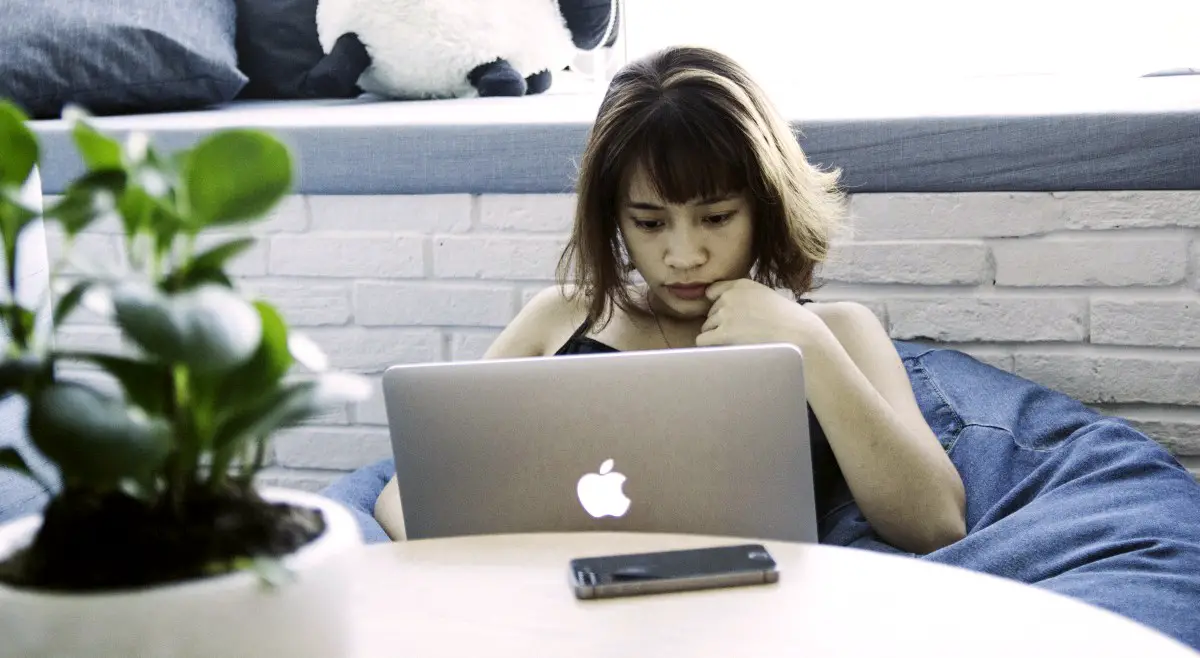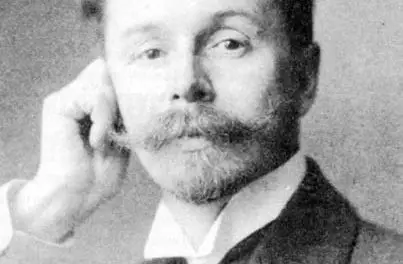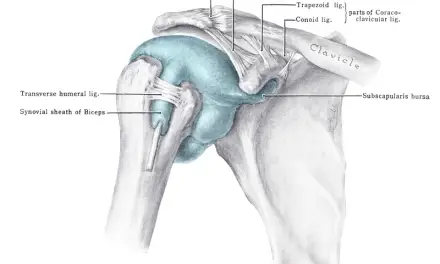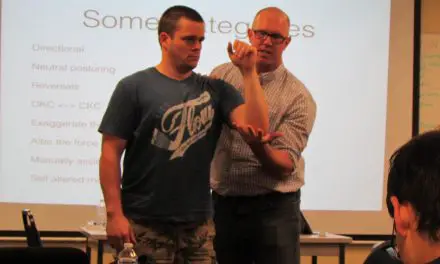“Critical thinking is a desire to seek, patience to doubt, fondness to meditate, slowness to assert, readiness to consider, carefulness to dispose and set in order; and hatred for every kind of imposture.” ~ Francis Bacon (1605)
If a patient feels better, then where is the harm? This question often comes up in any semester of the Research Literacy course I teach at an Ontario private massage therapy college in Canada.
It’s a reaction to the challenge of a closely held belief. I ask my students if they would be comfortable receiving treatment if their physician had concluded that the best evidence available for the proposed treatment was actually not very good, was done only on men, and didn’t take comorbidity into account.
But the patient they had last week seemed satisfied. After all, what harm could it do?
These are not questions I try to answer, but they are examples of questions that can elicit cognitive dissonance, an uncomfortable feeling that might come with a flushed face and thumping heart rate. There is no actual threat to life, of course, but somehow there is an implication that examining these questions may have an impact on the therapist.
If a massage therapist cannot help to boost an immune system against a plethora of diseases, reliably find or treat the debated trigger point, have a measurable impact on low back pain, nor have more than an immediate effect on stress, what can they do?
I can’t really answer that question. An awareness of critical thinking tools is perhaps the most important information I can pass on to students, more so than providing answers to questions students haven’t examined themselves.
Critical thinking is a concept of self and self-identity. Learning how to do it automatically is a continuous process, a self-directed and self-corrective practice that I can provide only the directional signpost.
Why critical thinking is needed in massage therapy education
Critical thinking is “disciplined thinking that is governed by clear intellectual standards.” (1) Since we humans are inherently egocentric in thought, the majority of us are likely to consider ourselves to be critical thinkers.
But if we’re not aware of how we think, it’s probable that we consider ourselves critical thinkers without really examining explicitly what these intellectual standards are. The Foundation for Critical Thinking details the standards required and traits that develop in the process of reflective thinking. (2)
They described critical thinking as clarity, accuracy, relevance, logic, breadth, precision, significance, completeness, fairness, and depth. These standards make up the questions that should be asked of any statement.
For example, a statement or thought that is unclear cannot then be assessed for accuracy, precision, or relevance to a process. Once these standards are considered, then depth or complexity of the thought can be determined.
If the thought is superficial, but clear, then the thought needs further developing. Assessing for a point of view comes next, and we can see if the thought or statement makes logical sense.
At the end of the process, we must assess our own bias. This might be the most important of all because once the thought is formed and assessed for all the other standards, we might not like what we see.
So if the thought makes sense, we have to ask is it fair or does it only make sense from our own perspective? The standards are only one part of the process.
A recent conference on critical thinking in health care settings adds that critical thinking:
“Whether termed as critical thinking or its related constructs (diagnostic reasoning, problem solving, clinical reasoning), it involves higher order mental abilities as well as mindfulness about the process of thinking.” (3)
In a health care setting, these skills may be learned on the job, but without formal instruction or continued practice, some therapists will never master critical thought processes and will remain static in their practice and beliefs.
Pseudoscience in massage therapy education
Pigliucci describes pseudoscience as “examples of discredited or untenable notions being passed for scientifically valid ones,” and scientism as “instances of overreach by the natural or social sciences into areas or questions for which their methods are either unsuited or can be seen as complementary at best.” (14)
In massage therapy, the system-wide lack of critical thinking skills results in both institutional support for outdated modalities, theories or belief systems, and the pressure from industry members to add pseudoscientific modalities to expand the scope of practice.
Students and graduates end up holding the same outdated or incorrect beliefs as the institutions and consider them justified because they are supported by educational networks, professional registration designations, and professional associations.
For example, the massage therapy registration body in Ontario provides a list of modalities considered complimentary to massage therapy that are approved for continuing education units (CEU), for which one of the criteria is: “The learning outcome must relate to the practice of massage therapy.” (5)
These include therapeutic touch that the Therapeutic Touch Institute describes as — “a holistic, evidence-based therapy that incorporates the intentional and compassionate use of universal energy to promote balance and well-being.”
Therapeutic touch is not a touch modality, and the therapist “will pass their hands over your body from head to toe, front and back, holding them between 2-6 inches from the skin. This is done to assess the condition of the human energy field,” but can also be done at a distance with an online request (6).
Touch for Health, a kinesiology and acupressure-based holistic therapy, sees no issue with relying on faith in their claim of health and healing. They describe their beliefs as influenced by “many religions tenets of faith, including the Judeo-Christian world-view and the example of Jesus’ healing.” (7)
With or without touch, Reiki is described as “a special kind of life force that can only be channeled by someone that has been attuned to it.” (8)
These modalities are also outside the scope of practice of massage therapy, where “if the primary intent, focus, and practical use of a modality is outside the definition of massage therapy’s scope of practice, the modality is considered not in the scope of practice.” (9)
Modalities that are outside of massage therapy’s scope of practice include osteopathy and Reiki (without touch).
Those that are considered within-scope modalities that can be used for required CEUs are craniosacral therapy, meridian massage, and orthobionomy. (9)
There are some glaring contradictions to these lists. Craniosacral is approved for CEUs but is a truncated version of cranial therapy from manual osteopathy, an outside of scope modality.
The energetic concepts of Reiki don’t change despite its mode of delivery. The relatively new orthobionomy is a mash up of osteopathic structural concepts and energetic healing principles, both of which are resoundingly outside of scope. (10)
This mix and match of courses approved versus courses within and without scope is confusing on a professional and patient level. What can and can’t be used is neither defined nor regulated, but a good number of modalities that are not considered within scope are approved for study by the same regulatory body that does not sanction their use in a massage therapy context.
These concepts become problematic when using ethical reasoning and critical thinking concepts in a profit-driven health care modality. (2) Granted, few of us are going to become filthy rich off the backs of our massage therapy patients, but to make a living, we may be — or have been — guilty of overzealousness with regard to what that “help” actually is.
When we can add such diversity to our practice that is both sanctioned and not sanctioned and has no evidence-based relationship to massage or even to reality, that becomes even more of an issue.

A potential antidote
Becoming a skilled critical thinker is really the only reasonable option to combat this confusing web of modalities, but how to become one doesn’t have a well-defined pathway.
The Foundation for Critical Thinking describes the critical thinking concepts as well as self-published books and attempts made to foray into the educational fields, but there are still issues with translating these concepts to health care educational settings. (11, 12, 13)
For example, the self-serving thinker is selectively reflective, largely unethical, and critically skilled in rhetoric.
This type of thinker is a manipulator who has little regard for others if it does not get them what they want. They can mimic the values of the person they are manipulating, but do not believe or hold those values to be true. (14)
A recent high profile example of this involving Makayla Sault, 11, a First Nations girl in Ontario, who refused chemotherapy for a treatable disease and died after pursuing alternative health care is an extreme example of where self-serving thinking and action can lead. (15)
It implicates the massage profession because the institute that provided the treatment was a licensed massage establishment. (16)
This example underscores why the question of harm needs to be thoroughly examined with every health care claim and modality added to massage therapy.
As therapists, we have an ethical responsibility to our patients to examine the beliefs our health care claims are based upon. The current massage therapy scope of practice does not include a scientifically unmeasurable healing energy able to be felt and harnessed by human hands alone.
Yet these kinds of modalities are being added to the scope as complimentary, essentially extending it with extraordinary claims for which there are no reliable ways of either defining or testing the mechanism of effect.
Outcome studies, often used to support such modalities, only measure outcomes and have little to do or nothing with the efficacy of a particular therapy. (18, 19)
Getting paid for providing a patient with hope of an outcome based on a treatment claim that is waiting for evidence of existence has no possibility of a logical and ethical conclusion.
As therapists, we are also patients, and thus, we deserve the best knowledge our therapists can provide.
If our medical doctor’s told us that their last patient’s was satisfied with a questionable treatment, then why would we expect the same behaviour from our massage therapist? We wouldn’t.
References
1. Wallace J. Critical Thinking: A Student’s Introduction. 5th Edition. New York: McGraw-Hill Companies; 2013.
2. Paul R, Elder L. The Miniature Guide to Critical Thinking Concepts and Tools. California: The Foundation for Critical Thinking; 2014.
3. Huang G, Newman L, and Schwartzstein RM. Critical Thinking in Health Professions Education : Summary and Consensus Statements of the Millennium Conference 2011.Teaching and Learning in Medicine. 2014; 26(1), 95–102.
4. Pigliucci M. (2015). Scientism and pseudoscience: A philosophical commentary. J. Bioethical Inquiry. 2015; 12(4), 569-575. Note: This is also an excellent example of a skilled critical thinker in action.
5. College of Massage Therapists of Ontario (CMTO) [Internet]. Ontario; CMTO; [Date unknown]. At the time of first publication in Fall 2016, the CMTO provided specific lists of in and out of scope modalities for RMTs, which is no longer the case. This does not change the critical thinking problems associated with massage therapists using these types of modalities within a health care context.
6. Therapeutic Touch International Association (ITTA) New York; ITTA; 2016.
7. Thie, JF. Touch for Health [Internet]. California; Touch for Health Eduction.
8. The International Center for Reiki Training [Internet]. Michigan.
9. College of Massage Therapists of Ontario (CMTO). Ontario; CMTO.
10. Ortho-Bionomy. Indianapolis; Publisher unknown].
11. The Foundation for Critical Thinking [Internet]. California; The Foundation for Critical Thinking; 2013.
12. Br.oadbear JT, Keyser BB. An approach to teaching for critical thinking in health education. J. School Health. 2000; 70(8), 322-6.
13. Huang G, Newman L, and Schwartzstein RM. Critical Thinking in Health Professions Education : Summary and Consensus Statements of the Millennium Conference 2011. Teaching and Learning in Medicine. 2014; 26(1), 95–102.
14. Paul R, Elder L. The Thinker’s Guide to Ethical Reasoning. California: The Foundation for Critical Thinking; 2013.
15. Walker C. Makayla Sault, girl who refused chemo for leukemia, dies. The Canadian Broadcasting Company, 2015 Jan 20.
16. Walker C. ‘Doctor’ treating First Nations girls says cancer patients can heal themselves. The Canadian Broadcasting Company, 2014 Dec 2.
17. Paul R, Elder L. The Miniature Guide to Critical Thinking Concepts and Tools. California: The Foundation for Critical Thinking; 2014.
18. Herbert R, Jamtvedt G, Mead J, Birger Hagen, K. Outcome measures measure outcomes, not effects of intervention. Aust. J. of Physiotherapy. 2005; 51(1) 3–4.

Monica Noy, RMT
Monica is a registered massage therapist in private practice in Ontario, Canada. Her interests in reading, writing and applying research started with her osteopathic education. She currently teaches research literacy with a focus on critical thinking to future RMTs.
A recent passion for pain science in manual therapy led Monica to develop continuing-education presentations on the topic, and critical thinking is the next project. In her spare time Monica enjoys gardening, canoe camping, and snowshoeing with friends, her cats, blogging about manual therapy, and occasionally correcting people on the internet.






Excellent article. Thank you !
My pleasure, Sarah. 🙂
An excellent and relevant topic. As I am currently examining this subject from a teaching perspective, I also offer or recommend examining a review of pedagocial strategies to teach EBP https://www.ncbi.nlm.nih.gov/pubmed/26375570 . For those believing they have developed critical thinking skills must also recognize cognitive maturity plays a role https://www.healio.com/nursing/journals/jne/2013-1-52-1/%7B0f2e12e2-a702-4ee1-b0c4-c3151a17f40e%7D/cognitive-maturity-and-readiness-for-evidence-based-nursing-practice#divReadThis
Both articles are open source. Happy reading.
Thank you, Marvin. I had not consider cognitive maturity as part of critical thinking. It may conjure a few future stories. Thanks, again!